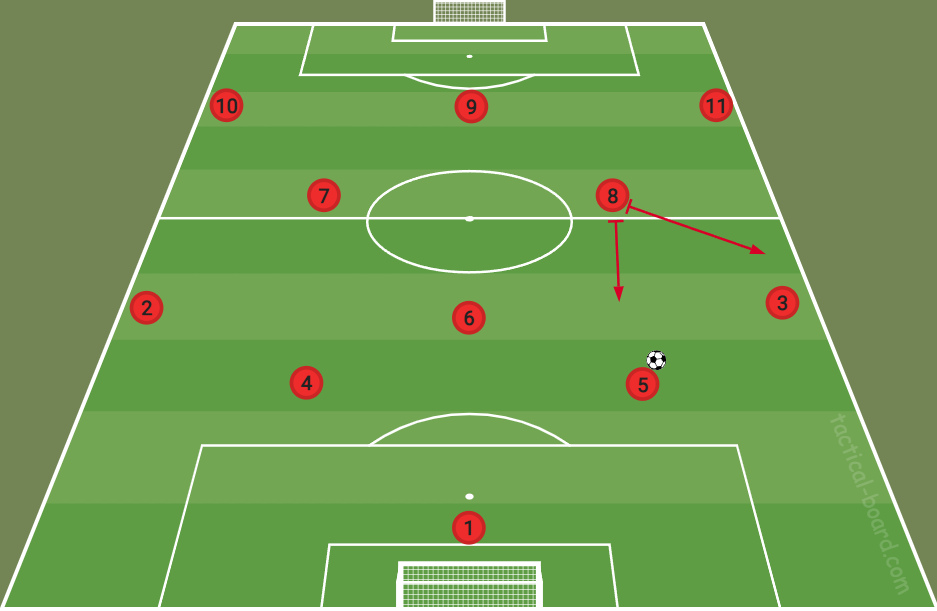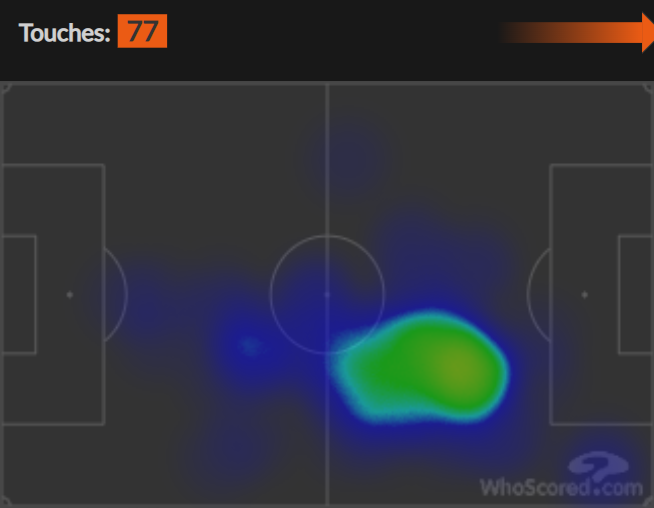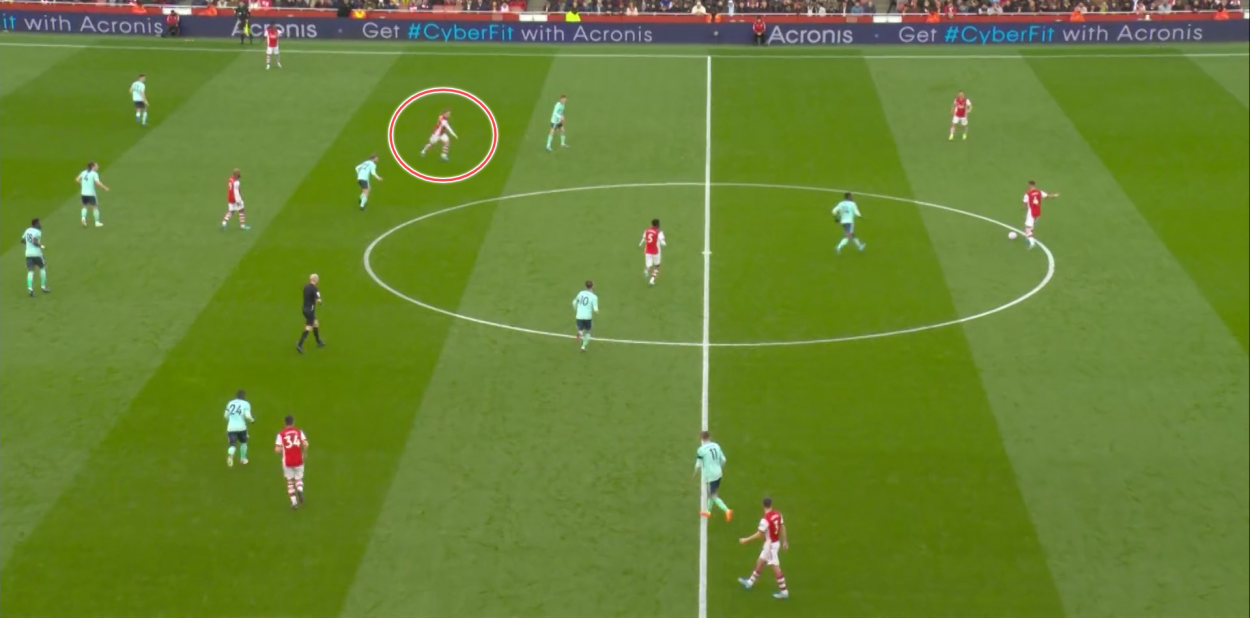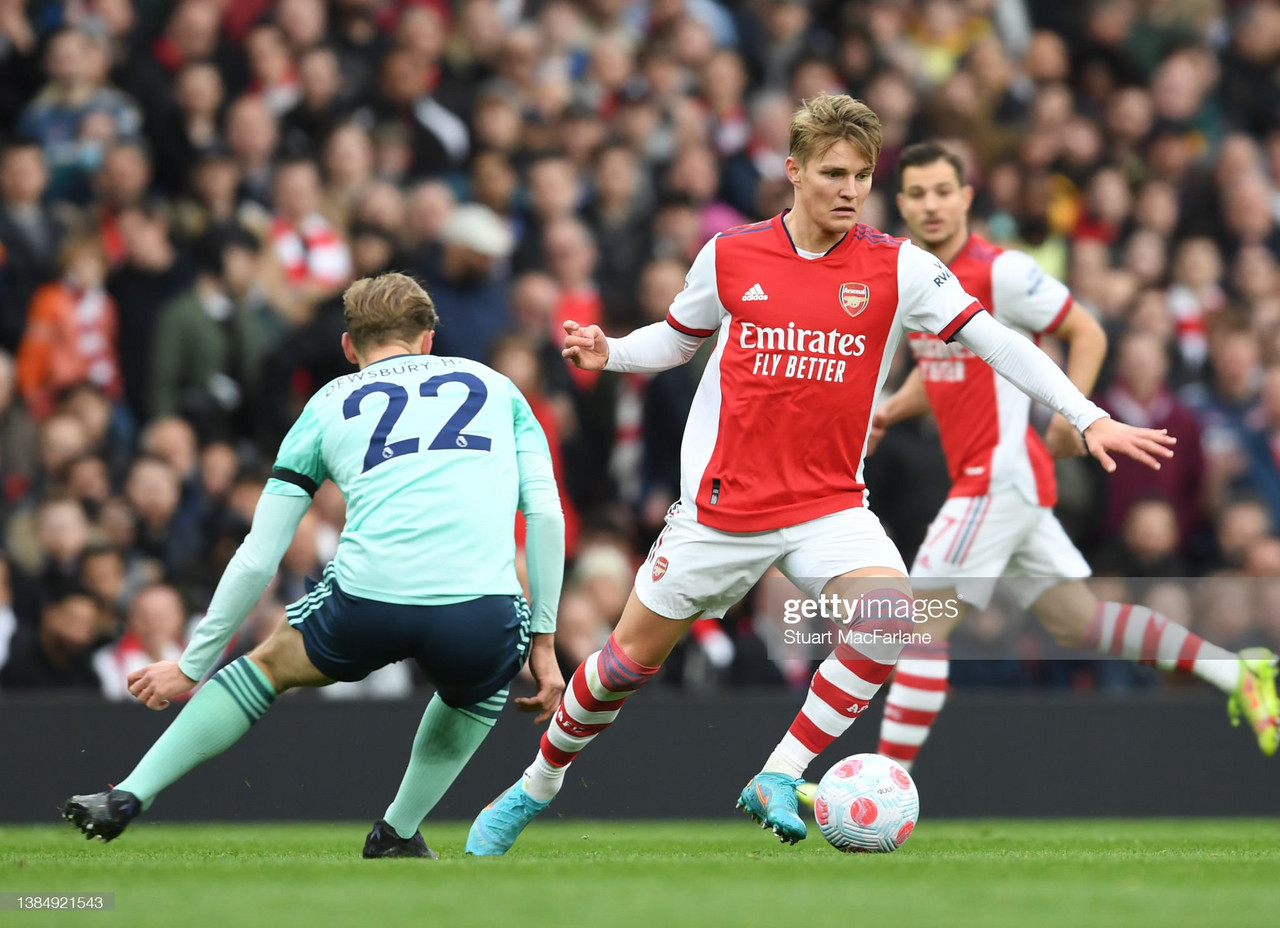Arsenal's playing style demands a lot of their midfielders. Flawless technique on the ball, tactical aptitude, immense work-rate off the ball, top improvisation and vision are essential ingredients.
They're the gel in the machinery that chugs away without pause, bringing the ball from point A to point B.
And as the Gunners push for Champions League qualification, one player is doing a lion’s share of the work from midfield: Martin Ødegaard.
But what exactly is his tactical role in the team? What makes him so influential? Why has his form surged lately?
THE SWITCH
A good place to start is Arsenal’s switch from 4-2-3-1 to 4-3-3 late last year and see how that affected the Norwegian through the lens of the Gunners’ 2-0 triumph over Leicester, when he was awarded Player of the Match.
As seen below Ødegaard is now closer to the build-up. That’s key because it’s easier for the goalie, centre-back, right-back and defensive midfielder to angle a pass his way.

It makes him more influential in the starting phase of the attack. It also leans into one of his strengths: ball carrying from deeper positions. Ødegaard carried the ball further (293 yards) than any other teammate by some distance against Leicester (Ben White: 218 yards), according to FBref.
Additionally, he’s more difficult to mark now, as opposed to playing behind the striker in a 4-2-3-1 with midfielders and defenders suffocating him.
His touch map against Leicester (top) and Newcastle in November in a 4-2-3-1 (bottom) highlights this change:


A drawback is that he doesn’t receive the ball in the final third as often by being further away from the opposition’s goal.
Unsurprisingly four of Ødegaard’s five goals this season came before the switch to 4-3-3. Although he’s now more influential on the game overall, direct goal contributions are perhaps decreasing.
THE THREE AVENUES
Let’s look at his role in the build-up, his three “avenues” and the productive dynamic on Arsenal’s right-hand side.
When White controls the ball Ødegaard will drop in between the opposition’s winger and central midfielder from his “home” high up in the right halfspace.

However, if the Arsenal right-back receives the ball, often in an inverted position like below, Ødegaard will offer a wide outlet:
-1.png)
Above we can see the dynamic on the right-hand side: Bukayo Saka gets to stay high and wide to threaten the space behind the defenders. And if the defending central midfielder follows Ødegaard wide, it’ll open huge space for Alexandre Lacazette and Thomas Partey to exploit. This is a playground for these players.
When Arsenal build up on the opposite side, the Norway captain is patiently waiting in his halfspace, eager to drop into one of the above mentioned avenues or attack the opposition box late if the left side can mount a successful build-up.
In this 4-3-3 Ødegaard has three avenues to receive the ball: his original position in the right halfspace, dropping between the lines towards White and running out wide when the right-back is inverted.
When playing the 4-2-3-1 he only had two avenues: his original, often congested position behind the striker and dropping into the right halfspace (Lacazette would drop into the left halfspace).
This new position in the right halfspace has unlocked a fruitful partnership between himself, Partey and Saka. When attacking further up the pitch a connection between these players is important to penetrate the opposition’s block. Mikel Arteta's ablility to play pretty much the same team has helped this cohesion evolve.
In fact Arsenal have won eight of their last ten games when the “PØX” trio (Partey, Ødegaard, Granit Xhaka) has started in midfield, only losing to Man City and drawing to Burnley.
THE PRESS MACHINE
Ødegaard doesn’t only shine on the ball, he’s the most important player in Arsenal’s pressing scheme.
Arteta implements a 4-4-2 shape off the ball with the Norwegian lining up next to Lacazette. Those two will most often trigger the press to which the rest of the team follows.
Here Ødegaard starts the press. Lacazette marks Leicester’s defensive midfielder, Partey follows the central midfielder who’s dropping deep and Saka then runs at the left-back.
-1.png)
This applies in Arsenal’s defensive half too. However, then the trigger to start the press usually occur when the ball is played wide.
Ødegaard’s extreme willingness to sprint at the defenders throughout the game is pivotal to how the Gunners defend from the front. Unsurprisingly, he had the most pressures (22) of all Arsenal players against Leicester, according to FBref. Lacazette ended the match with only 15 pressures, highlighting his inferior running ability.
A thought for when the club looks for a new striker this summer…
A HOLISTIC ANSWER
Ødegaard’s glue-like first-touch, precision passing, hawk-like vision, tireless work-rate and professional attitude will always make him sparkle.
But when a player like this is put in the right position within the right tactical system it can elevate him (and those around him) to the very top.
His recent surge in form is no surprise and there’s a holistic reason for it. It’s down to his talent, a shift to 4-3-3 as well as improved cohesion with his teammates and tactics.









































